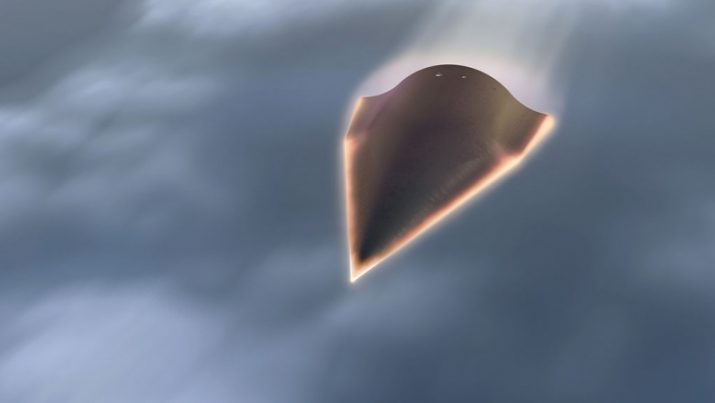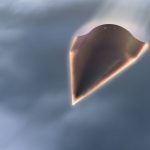
Russia Planning to Field Defense-Evading Hypersonic Missiles by 2020
Friday, August 26, 2016 by usafeaturesmedia
http://www.nationalsecurity.news/2016-08-26-russia-planning-to-field-defense-evading-hypersonic-missiles-by-2020

(NationalSecurity.news) Though China and the United States are also rushing to develop hypersonic vehicles and missiles that are capable of evading conventional missile defenses, it appears as though Russia might be the first nation to actually deploy them.
As reported by the Washington Free Beacon, Moscow is planning to field revolutionary hypersonic missiles by 2020, a Russian defense industry leader said.
Boris Obnosov, director of the Tactical Missiles Corp., which is run by the government, told a Russian news agency the new missile would be able to penetrate advanced missile defense technologies and thus represents a major step forward in military technology.
“It’s obvious that with such speeds—when missiles will be capable of flying through the atmosphere at speeds of seven to 12 times the speed of sound, all [air] defense systems will be weakened considerably,” Obnosov told the Rambler News Service last week.
The revelation comes as Navy Adm. Cecil Haney, commander of U.S. Strategic Command, said in July that the hypersonic missile threat was increasing.
“Hyper-glide vehicle research and development are also challenging our planning calculus,” Haney told a conference on missile defense in Huntsville, Alabama. “The ability to find, fix, and track and hold … these types of capabilities are becoming increasingly more difficult. Hyper-glide vehicle technology can complicate our sensing and our defensive approaches.”
He added that the U.S. military must “think about it and look at it in different ways so that, again, we are maximizing [missile defense] sensing to be able to understand what exactly is it going at so we can then look at how do we take it out.”
The WFB noted that a missile defense expert with Lockheed Martin said earlier this month that the Defense Department is examining ways to shoot down maneuvering hypersonic missiles. Some options being considered are an extended range version of the Terminal High-Altitude Area Defense, or THAAD-ER, as well as high-powered lasers that could down missiles before they reached hypersonic speeds of Mach 5 and higher.
The comments by Obnosov are some of the first public statements referring the secret Russian hypersonic missile program. The government has shielded most of the details of the program that has been in development now for a number of years.
In addition to the Russians, China is also working to develop hypersonic missile/strike vehicles and has conducted several tests of the DF-ZF high-speed glider.
The Pentagon is also said to be developing hypersonic missiles and space vehicles, but the WFB reported that those programs are said to be funded at lower levels than similar programs in Russia and China.
That said, Obnosov said Russia’s funding for its program should be higher.
“The development of hypersonic technology can be a catalyst for development of the entire industry, the entire national economy as they used to say,” he said, comparing the development of hypersonics to the launch of the first satellite in 1957. Hypersonic-speed vehicles also could have commercial applications.
Such vehicles could reach speeds of between Mach 6 and 7, maxing out at about 5,300 mph, said Obsonov.
The technology is a challenge, however, due to the heat created by high-speed travel through the atmosphere. In addition, hypersonic missiles are difficult to control.
More:
- U.S., Russia And China Embroiled In Hypersonic Missile Race With Winner-Take-All Stakes
- China Moving Quickly To Deploy Hypersonic Glide Vehicle: Pentagon
- China’s New Hypersonic Glide Vehicle Is A Nuclear-Armed Threat That Can Avoid U.S. Missile Defenses
(c) 2016 USA Features Media.
Tagged Under: Tags: China, hypersonic missile, missile defense, Russia







